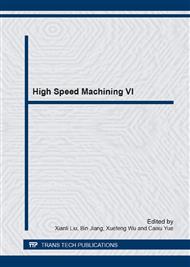p.521
p.526
p.531
p.537
p.543
p.548
p.553
p.559
p.564
Numerical Modelling of Liquid Bearing Utilizing Traveling Waves by Using OpenFOAM
Abstract:
A new type of hydrostatic liquid bearing utilizing traveling waves is proposed and analyzed in this research. In principle, the moving part of the proposed bearing is supported by a liquid film generated by the traveling wave transportation, which creates a liquid flow between the bearing and guide surfaces. A numerical simulation model for the unsteady and incompressible flow due to the traveling wave motion of the bearing surface is developed based on Navier-Stokes equations. The equations are solved discretely by dynamically meshing the isotropic 2D model and updating the boundary conditions. It reveals that the floating force varies with a nonzero average value. In order to suppress the undesirable fluctuation, voltage-offsetting technique has been proposed. Simulation results show that the steady floating force can be obtained. The proposed bearing design is ought to eliminate drawbacks of conventional hydrostatic bearings such as supply of external pressure source, use of compressor, and tubes while still achieving comparable static and dynamic capabilities.
Info:
Periodical:
Pages:
543-547
Citation:
Online since:
July 2014
Authors:
Keywords:
Price:
Сopyright:
© 2014 Trans Tech Publications Ltd. All Rights Reserved
Share:
Citation:


